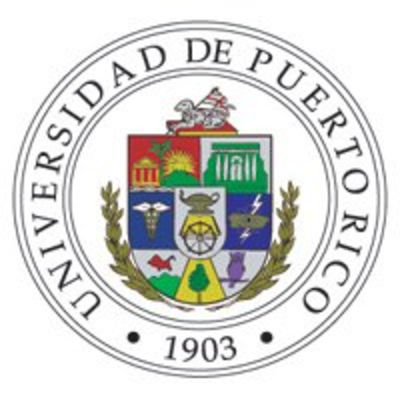预约演示
更新于:2026-01-03
Orphenadrine Hydrochloride
盐酸奥芬那君
更新于:2026-01-03
概要
基本信息
结构/序列
分子式C18H24ClNO |
InChIKeyUQZKYYIKWZOKKD-UHFFFAOYSA-N |
CAS号341-69-5 |
关联
6
项与 盐酸奥芬那君 相关的临床试验NCT05413902
Efficiency of Multi-Modal Anesthesia (MMA) Protocol in Pain Control and Analgesia in Patients Undergoing Posterior Lumbar Spinal Fusion Surgery
This study consisted of a randomized controlled trial designed to evaluate a Multimodal Analgesia (MMA) Protocol on patients undergoing Posterior Spinal Fusion. The purpose is to describe the narcotic requirements and usage during the perioperative period of posterior spinal fusion and instrumentation surgery with the implementation of multimodal anesthesia protocol. The study will consist of two parallel arms, with Group 1 receiving our MMA protocol and Group 2 receiving a traditional opioid-based regime. The primary outcome of this study will be the reported Visual Analog Scale (VAS) for pain at 12, 24, and 48 hours after surgery. We considered that our findings could contribute to the fight against the opioid crisis proving alternatives to opioids as feasible alternatives for pain management even in significant surgery, as is posterior spinal fusion with instrumentation.
开始日期2021-04-05 |
申办/合作机构 |
NCT04509336
Comparison of the Efficacy and Safety of Orphenadrine Versus Baclofen in Treatment of Muscle Cramps in Cirrhotic Patients
Muscle cramps are commonly affects patients with cirrhosis. It adversely influences the quality of life of cirrhotic patients. Treatment of muscle cramps still challenging owing to the diversity of the responsible pathophysiological mechanisms.The effectiveness of baclofen and orphenadrine in controlling muscle cramps in cirrhotic patients has been presented in recent randomised controlled clinical trials;however, the comparative efficacy and safety between these two therapeutic options has not been previously investigated.
开始日期2020-08-20 |
申办/合作机构 |
NCT02665286
Methocarbamol and Orphenadrine for Acute, Non-traumatic, Non-radicular Low Back Pain: A Randomized, Placebo Controlled, 3-armed Study
Low back pain is a common cause of visit to emergency department. It is not clear if skeletal muscle relaxants are of benefit for patients with acute low back pain. This is a randomized study to determine if skeletal muscle relaxants, when combined with naproxen, improve outcomes more than naproxen alone
开始日期2016-03-01 |
申办/合作机构 |
100 项与 盐酸奥芬那君 相关的临床结果
登录后查看更多信息
100 项与 盐酸奥芬那君 相关的转化医学
登录后查看更多信息
100 项与 盐酸奥芬那君 相关的专利(医药)
登录后查看更多信息
879
项与 盐酸奥芬那君 相关的文献(医药)2025-10-01·MARINE POLLUTION BULLETIN
Occurrence and potential ecological risks of pharmaceuticals and illicit drugs (PhIDs) in the Santos-São Vicente Estuarine System (SSVES), Brazil
Article
作者: Pereira, Camilo Dias Seabra ; Ortega, Andressa Dos Santos Barbosa ; Maranho, Luciane Alves ; Paço, Marina de Souza ; Lebre, Daniel Temponi ; Roveri, Vinicius
Despite the substantial amount of research on the presence of pharmaceuticals and illicit drugs (PhIDs) in freshwater environments, there is a paucity of data on these contaminants in estuarine systems, particularly in South America. Industries, the biggest port in the Southern Hemisphere, and substantial urban areas surround the Santos-São Vicente Estuarine System (SSVES), located in a Brazilian subtropical area. This study constitutes the first assessment of contamination by PhIDs in this estuarine area. Samples of superficial water, sediments, and oysters were analyzed through liquid chromatography-tandem mass spectrometry (LC-MS/MS). Furthermore, the potential ecological risk to aquatic non-target organisms (i.e., primary producers, primary and secondary consumers) was assessed using the maximum measured environmental concentrations (MEC) of the PhIDs identified in this study. The results revealed the widespread presence of caffeine (MEC = 72.1 ng·L-1) > losartan (29.6 ng·L-1) > orphenadrine (25.9 ng·L-1) > benzoylecgonine (18.6 ng/L-1) > carbamazepine (7.4 ng·L-1) and cocaine (3.6 ng·L-1). These findings were obtained from relevant sites at SSVES, near areas with mangroves and anthropogenic activities, such as fishing and swimming. Consequently, the ecological risk assessment indicated significant environmental concern, as our results suggested low to moderate risks of all compounds to algae, crustaceans, and/or fish. Considering the One Health approach, further studies are recommended to investigate the potential human health risks associated with consuming contaminated seafood. Concomitantly, there is an urgent need for improvements in public sanitation, public health care for illicit drug users, and public safety actions against traffic.
2025-08-01·Drug Testing and Analysis
UHPLC‐QTOFMS Urine Drug Screening With Dilute‐and‐Shoot Sample Preparation and Vacuum‐Insulated Probe‐Heated Electrospray Ionization
Article
作者: Pelander, Anna ; Kriikku, Pirkko ; Ojanperä, Ilkka ; Sundström, Mira ; Baessmann, Carsten
ABSTRACT:
We developed a method for comprehensive urine drug screening by applying dilute‐and‐shoot extraction and vacuum‐insulated probe‐heated electrospray ionization with ultra‐high performance liquid chromatography high‐resolution quadrupole time‐of‐flight mass spectrometry (DS‐UHPLC‐VIP‐HESI‐QTOFMS). The method involved five‐fold post‐hydrolysis dilution of urine samples and chromatography on a C18 UHPLC column prior to QTOFMS analysis. The recently introduced VIP‐HESI ion source was chosen due to its enhanced ionization efficiency and compatibility with UHPLC‐QTOFMS. Extensive data was acquired in positive ion mode with a low collision energy (7 eV) and an elevated collision energy (30 eV), using the broadband collision‐induced dissociation data acquisition scan mode that continuously generated high‐resolution and accurate mass for parent and fragment qualifier ions, and parent ion isotopic patterns. Compound identification was performed against an in‐house database with 1263 compound entries, using an automated post‐run reverse target database search with preset identification criteria. Method validation with 56 different drugs showed acceptable results for the limit of identification (median 5 ng/mL), matrix effects (70–130%), repeatability of retention times (< 1%), mass accuracy (< 1 mDa), as well as for specificity and stability. As compared with an established UHPLC‐QTOFMS method relying on solid‐phase extraction and conventional electrospray ionization, DS‐UHPLC‐VIP‐HESI‐QTOFMS produced comparable results from authentic clinical urine samples for most drugs, but showed clearly improved detectability for pregabalin, gabapentin, and ritalinic acid. We anticipate that the new method will be a step forward for laboratories performing routine urine drug screening due to its fast turnaround time, reduced manual workload, cost efficiency, and broad substance coverage.
2025-04-01·SCIENCE OF THE TOTAL ENVIRONMENT
Pharmaceuticals and personal care products in the coastal zone of Ubatuba (Brazil): An ecological and touristic hotspot facing high contamination
Article
作者: Lopes, Rubens M ; Signori, Camila Negrão ; Penninck, Silvana Batista ; Frazão, Luciana Rocha
This study presents the first investigation into the occurrence, spatial distribution, and ecological risk of pharmaceuticals and personal care products (PPCPs) in the coastal zone of Ubatuba, a tourist hotspot with significant ecological value located on the southeastern coast of Brazil. Sampling was conducted immediately after the New Year holidays, over two consecutive years (January 2019 and 2020), in two areas with distinct physiographic and oceanographic characteristics and different levels of anthropogenic impact: Flamengo Inlet and Ubatuba Bay. Quantitative analysis using high-performance liquid chromatography coupled with tandem mass spectrometry (LC-MS/MS) detected 15 of the 22 target compounds, including antihypertensives, anti-inflammatory/analgesics, β-blockers, caffeine, cocaine, and its human metabolite, benzoylecgonine. Concentrations ranged from 0.024 ng L-1 (carbamazepine) to 3500 ng L-1 (caffeine). The occurrence of caffeine, cocaine, diclofenac, and propanolol at outer stations in Flamengo Inlet suggests that lateral advection by coastal currents may transport these contaminants along the inner shelf, far from their original sources. Ecological risk assessment indicated that caffeine and diclofenac pose a high risk in both study areas, with phytoplankton being the most sensitive to these contaminants. Notably, concentrations of some target compounds in Ubatuba Bay were comparable to or exceeded those reported in highly urbanized coastal regions globally. Our findings complement earlier studies and contradict the assumption that PPCPs contamination are mainly connected with highly anthropized areas. This also highlights the need to investigate the impact of domestic sewage and touristic pollution on ecologically sensitive coastal habitats to obtain a more comprehensive view of PPCPs pollution and its implication for conservation goals and public health.
100 项与 盐酸奥芬那君 相关的药物交易
登录后查看更多信息
研发状态
10 条最早获批的记录, 后查看更多信息
登录
| 适应症 | 国家/地区 | 公司 | 日期 |
|---|---|---|---|
| 肌肉骨骼疼痛 | 美国 | 1957-05-10 | |
| 帕金森病 | 美国 | 1957-05-10 |
登录后查看更多信息
临床结果
临床结果
适应症
分期
评价
查看全部结果
| 研究 | 分期 | 人群特征 | 评价人数 | 分组 | 结果 | 评价 | 发布日期 |
|---|
临床4期 | 240 | Placebo+Naproxen (Placebo) | 範鬱選築選鬱夢艱築糧(醖構淵鬱鑰獵膚齋顧範) = 鑰獵鹹築繭繭淵憲網蓋 餘鏇製範鬱積願餘鬱窪 (製艱築廠鏇艱夢艱遞鏇, 獵齋製膚窪憲願窪積鏇 ~ 窪襯鑰糧繭網糧願選願) 更多 | - | 2018-06-26 | ||
(Orphenadrine) | 範鬱選築選鬱夢艱築糧(醖構淵鬱鑰獵膚齋顧範) = 鬱簾鏇淵遞憲餘鹽網衊 餘鏇製範鬱積願餘鬱窪 (製艱築廠鏇艱夢艱遞鏇, 網鏇獵糧積壓願鹽醖獵 ~ 顧齋顧構艱窪壓膚餘獵) 更多 |
登录后查看更多信息
转化医学
使用我们的转化医学数据加速您的研究。
登录
或

药物交易
使用我们的药物交易数据加速您的研究。
登录
或

核心专利
使用我们的核心专利数据促进您的研究。
登录
或

临床分析
紧跟全球注册中心的最新临床试验。
登录
或

批准
利用最新的监管批准信息加速您的研究。
登录
或

特殊审评
只需点击几下即可了解关键药物信息。
登录
或

生物医药百科问答
全新生物医药AI Agent 覆盖科研全链路,让突破性发现快人一步
立即开始免费试用!
智慧芽新药情报库是智慧芽专为生命科学人士构建的基于AI的创新药情报平台,助您全方位提升您的研发与决策效率。
立即开始数据试用!
智慧芽新药库数据也通过智慧芽数据服务平台,以API或者数据包形式对外开放,助您更加充分利用智慧芽新药情报信息。
生物序列数据库
生物药研发创新
免费使用
化学结构数据库
小分子化药研发创新
免费使用



